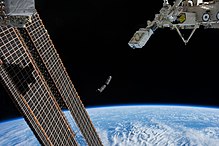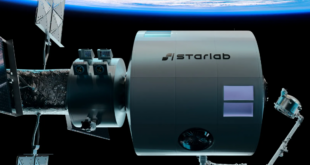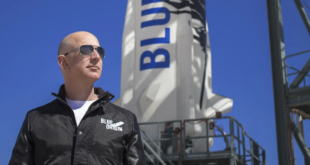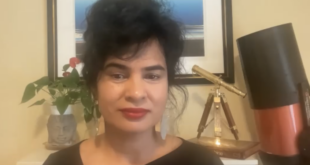
Nanoracks, a leading provider of commercial access to space, completed its 17th CubeSat deployment mission from the International Space Station (ISS) using commercially developed and operated hardware. This mission included satellites launched to the International Space Station on both Northrop Grumman’s NG-12 flight and the SpaceX CRS-19 mission. The deployer packs were then assembled together on orbit by the astronaut crew.
The satellites released on 19 February 2020 and their deployment times were:
- RadSat-u (Montana State University) – 07:10:01 GMT
- Phoenix (Arizona State University) – 09:35:00 GMT
- QARMAN (von Karman institute) – 11:20:00 GMT
- CryoCube (Sierra Lobo Incorporated/NASA Kennedy) and AzTechSat-1 (Collaborative program between NASA Ames and Universidad Popular Autónoma del Estado de Puebla[UPAEP] in Mexico) – 12:55:01 GMT
- SOCRATES (University of Minnesota) — 14:30:00 GMT
- HARP (University of Maryland, Baltimore County) and ARGUS-02 (Saint Louis University) — 16:00:00 GMT
- SORTIE (Astra LLC) — 17:40:00 GMT
QARMAN (Qubesat for Aerothermodynamic Research and Measurements on AblatioN) is the world’s first CubeSat designed to survive atmospheric re-entry. The QARMAN project, funded by the European Space Agency, started in 2013 at the von Karman Institute for Fluid Dynamics (VKI).
Notably, AzTechSat-1 is the first satellite built by students in Mexico for deployment from the Space Station and is the first CubeSat built as a collaboration between the Mexican Space Agency and NASA. The investigation demonstrates communication within a satellite network in low-Earth orbit. Such Intra-satellite communication could reduce the need for ground stations, lowering the cost and increasing the number of data downloads possible for satellite applications.
Additionally, HARP marked the 100th CubeSat project for which launch and deployment was funded by NASA’s CubeSat Launch Initiative (CSLI), which offers universities, high schools and non-profit organizations the opportunity to fly small satellites. Launches for CSLI selectees are provided through Educational Launch of Nanosatellites (ELaNa) missions facilitated by NASA’s Launch Services Program (LSP). HARP, RadSat-u, Phoenix, SOCRATES, CryoCube, AzTechSat-1, SORTIE, and ARGUS-02 missions were all part of the ELaNa 25 mission managed by NASA LSP.
“Huge congratulations to the NASA ELaNa team on their 100th CubeSat milestone. Led by Scott Higginbotham out of Kennedy Space Center, this initiative has allowed so many students to experience building real in-space hardware and programs and has given our team at Nanoracks the opportunity to work with some of the most intelligent students around the country and the world. Thank you for allowing Nanoracks to play a key role in this inspiring and effective program!” concludes Prejean.
“The diversity of users on each CubeSat mission is growing with every flight,” said Tristan Prejean, Senior External Payloads Mission Manager for Nanoracks. “Our 17th CubeSat mission has satellites built by university students, international space agencies and research institutes, commercial companies reaching the ISS for the first time, and by our friends at NASA. Commercial access to low-Earth orbit is enabling an unprecedented cohort of users from around the world to make discoveries in space – and we are watching this grow year by year.”
To date, Nanoracks has deployed 263 small satellites, including three MicroSats across multiple deployment platforms, including the International Space Station, the Cygnus spacecraft, India’s Polar Satellite Launch Vehicle, and soon, SpaceX’s Falcon 9.
 SpaceWatch.Global An independent perspective on space
SpaceWatch.Global An independent perspective on space




